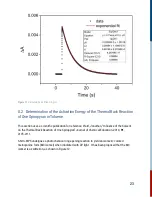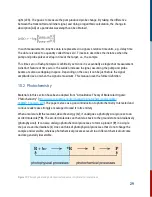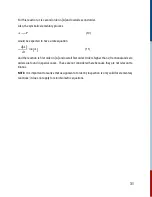
11.2 Troubleshooting
This section aims to provide the user with some solutions to common problems.
If the problem is…
Here’s what to do…
There is no white glow in the Kronos when
the USB is plugged in.
Plug the USB connector in snugly and check that the
computer can detect the Kronos. It will appear as a COM
port connection.
There is no light detected on the
photodiode (PD level is zero or very low).
Check that the instrument is plugged in and turned on, and
there is no obstruction in the light path. You can verify the
unit is turned on by watching for a white glow emitted by
the LED light. Remove any filters that were placed in the
slit before the detector.
There is a signal, but it is noisy or
fluctuating significantly.
1.
Remove the sample and filters and check that the
photodiode reads a strong baseline intensity. Contact
your local representative or Ultrafast Systems if no light
is detected.
2.
Try to average across more scans if the baseline
intensity falls within the recommended range.
3.
Ensure the Range is set to Auto (checked box) when
performing absorption measurements. For emission
measurements, ensure Auto is turned off (unchecked
box) and play around with the slider and clicking run.
The photodiode reads the baseline
correctly, but when I place my sample
inside and do a measurement, I see no
observable change.
Check the photoresponse of your sample and that
appropriate filters are placed in the slit. Make sure to
familiarize yourself with Section 8: Acquiring Data on page
prior to performing measurements.
I can reliably measure the reference
samples and get consistent data, but
when I place my sample for
measurements, I do not see any signal.
The sample response could be too weak or fast for the
Kronos to detect. If you have access to a laser pump-probe
setup like the EOS or Helios, you can try to perform your
measurements there.
34



















